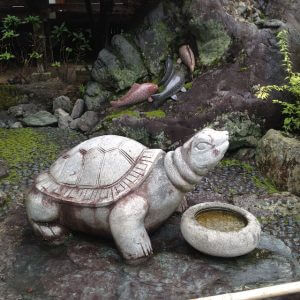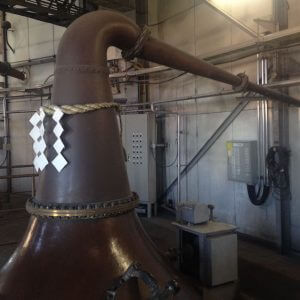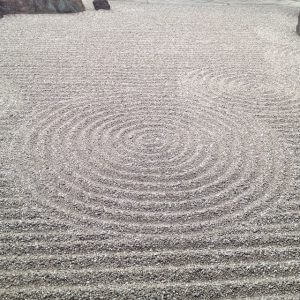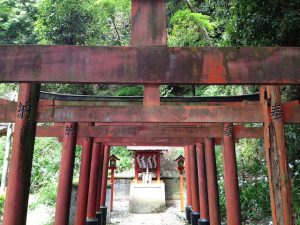Labels and Trust, the new Japanese agreement
Sone thoughts on the new labelling agreement for Japanese whiskies. A positive move that has been deservedly welcomed, but it’s only the first step… and there is much work to be done to rebuild trust.
It was clear, even for someone with dyscalculia, that the Japanese whisky boom of the ‘60s and ‘70s could not have been fuelled wholly by domestically-produced spirits. There wasn’t sufficient capacity. Imported bulk whisky (predominantly from Scotland and Canada) was used for the low-end blends.
Even though this was accepted, there remained an assumption that some form of legislative framework was in place for the other whiskies – the stuff we were getting in export. There had to be, right? After all, Japan is a country which likes precision and detail.
It transpired that there was nothing. The majors who had blended imported bulk and domestic whisky had not done anything illegal. How could they, since there were no regulations?
But, by the 2000s the whisky world was changing. Japan was on a premium push, the new darling (deservedly) of the whisky world. With that came a different scrutiny, and a need for some degree of transparency.
The rise in demand, coupled with a stock shortage and the lack of any regulatory framework (and the public’s ignorance of this), resulted in new bottlers taking advantage of the world’s goodwill towards Japanese whisky. World blends from mysterious new distilleries began to appear as ‘Japanese Whisky’. Shochu producers, exploiting a loophole in American law, started selling aged products as whisky there. All were sold at the new super-premium prices.
By then most of the majors were lobbying for regulations to come into play. Suntory’s blenders and execs spoke out in public forums, as did Ichiro Akuto of Chichibu, and Kirin’s master blender Jota Tanaka.
“As a consumer and whisky lover, I think it’s important to know exactly what the whisky you’re trying to drink is,” said Yumi Yoshikawa, Chichibu’s global ambassador. “The Japanese whisky industry has taken a step forward. The time has come for them to change in an internationalised society.”

The lobbying by the more far-sighted producers and subsequent negotiations have taken years, but last month came the announcement that the members of the Japan Spirits and Liqueurs Makers Assoc. [JSLMA] had reached an agreement on labelling requirements.
In brief, Japanese whisky must be made from malted grains, other cereal grains (including rice) and water (the last being Japanese).
Only malt can be used for saccharification, and fermentation and distillation must take place in a distillery in Japan.
The spirit must be distilled to no higher than 95% and aged in wooden casks (of no more than 700l) in Japan for a minimum of three years. It must also be bottled in Japan at no less than 40% abv.
The standards are being administered by the JSLMA and come into effect on 1st April 2021.

There was general enthusiasm for the move. “It’s our belief that this will have a very effective impact on our industry, and non-true Japanese Whisky will be kicked out of the market,” says Tanaka.
All the producers agree however that this is just the first step. “At least by creating the right path for the industry now, it raises consumer awareness and makes it difficult for products that lack morals to be distributed,” was Yoshikawa’s take. “We thought it is necessary as a first stage.
“What we should do is to keep in step and do the right thing to create a positive atmosphere in the market that makes it difficult for fake products to be distributed.”
However, the labelling agreement only applies to members of the JSLMA. It is not enshrined in law. When might that happen? Here, the responses varied.
“I haven’t heard of any discussions as to passing this new definition into a law,” Suntory’s chief blender Shinji Fukuyo told me, “but I heard the National Tax Agency supported this announcement.”
Yoshikawa was more positive. “It’s not really decided but won’t be that far in the future I personally think.”
Another contact thought it would take “many, many years”, while Emiko Kaji, international business development manager at Nikka, said that, “As far as we know, the government has no tangible plan to pass it into law.”
To make the issue more complicated, there is nothing to stop a producer which isn’t a member of the JSLMA to continue to release dubiously labelled liquid, while firms have until March 2024 to apply to the changes.
“In my opinion, technically non-members could continue, but we believe the new standards raise a hurdle, and such fake products would decrease,” was Tanaka’s hope.
“We need to rely on consumers’ and the media’s eyes and critiques. For example, the Tokyo Whisky & Spirits Competition organised by Japan Whisky Research Centre will clearly differentiate the categories among Japanese, non-Japanese, and fake ones.”

I asked Liam Hiller, head of content at Dekanta, the on-line Japanese whisky retailer about how his firm is undertaking the process of recategorising its list.
“If we can confirm a whisky is a world blend, we are categorising it as such,” he said. “In situations where information on the product’s ingredients is not readily available, or where the producer hasn’t disclosed clear information, we are categorising the product as having “Unspecified Origin”.
Presumably, the new labelling would also outlaw aged shochu ‘whiskies’. As Kaji pointed out, under the new agreement, using koji for whisky-making is not allowed for the Japanese market and export, though she then pointed out a loophole, adding that bottles of aged shochu “produced by non-JSLMA members for export,” would still be able to be bottled as whisky “unless authorities in importing countries such as TTB prohibit this kind of product.”
However, US importers of aged shochu remain adamant that the product is whisky – even at the same time as the some producers’ websites say that it is not. Result? More confusion.
Given this, how will producers and retailers ensure that the new agreement sticks? “In our view, producers, retailers and consumers alike need to get behind the new labelling standards, support them and adhere to them,” said Hiller.
“We would like to see more producers join the association and pledge their commitment to upholding these standards. We feel that the JSLMA, with such large and influential members, will now be able to exert more effective pressure overall.
“It will also be good to see international spirits competitions follow the guidelines when creating their categories and what products qualify for them. This will hopefully push producers into adhering to the labelling standards if they want their products to be awarded and recognised for quality.”
CONSUMER REASSURANCE
What can a consumer do to gain assurance that what they are buying is 100% authentic? “We encourage consumers to ask each producer’s customer service whenever any confusions/questions are raised,” said Tanaka. “Of course, we, producers would need to provide more information on this matter for more transparency through our website and other means,” an opinion which was echoed by the other producers.
“There are still risks of non-Japanese Whiskies being labelled as Japanese Whisky as the new definition is not binding,” added Fukuyo, “but I assume that consumers will eventually stop putting their hands on such products in the long run.
“The new definition will begin to be enforced from April 2021. During the transition period until March 2024, we recommend that consumers check with the manufacturer if the product you are looking for is ‘Japanese whisky’.”
Encouraging higher consumer awareness is a sensible option, but is there not also a need for an information campaign by the JSLMA, as the upholder of the new agreement? What about some form of sticker or mark on the bottle showing it to be 100% Japanese whisky?

All producers must now be proactive in alerting consumers to the changes – as industry leader, there is a huge amount that Suntory could do to ensure that the new agreements are understood.
I wonder whether, outwith the whisky bubble, consumers are even aware of these changes – or even the problem. How many people would think of looking at a website to check on a bottle’s validity? To suggest that this should be an option show that the labelling rules are still not tight enough. Consumers should be able to pick up a bottle of Japanese whisky and have confidence that it is 100% Japanese.
If the bottle comes from a Japanese producer, the likelihood is that the consumer will believe it is Japanese, unless it clearly says ‘world blend/whisky’ on the label. How can a whisky which includes Scotch malt or grain in it still be labelled ‘Product of Japan?’ A subtle removal of a few words, a quiet rearranging of the shelves and retailer websites will surely prolong the issue, not help to bring it to an end.
To help in this, under the new rules why not create a new category called ‘world blend/whisky’ – a term already used by Suntory and Chichibu on their labels – to clearly define the whiskies? Until that happens consumers and trade will still be confused, and not doing it hardly gives confidence in a firm’s willingness to change the current situation.
All of this comes down to our old friend, transparency, something which today’s consumers are, rightly, demanding. There is also, as Yoshikawa pointed out, a moral dimension.
A NEED TO REBUILD TRUST
A brand, a category, is built on a tacit trust between producer and customer (consumer, bartender, retailer). When you pick up that bottle of Scotch, or Bourbon, Irish, Canadian whisky, etc., you feel secure that what it says on the label means something. There is a guarantee of provenance. The producer’s name is its bond. That’s the point of regulations – to protect consumers.
When that contract is broken, then the trust disappears, and the producer and category are damaged.
When you have said for years about a whisky that, “this is Japanese”, and then it is revealed that it is not, then why should anyone believe anything you say?
The issue isn’t the quality of the whisky, or the skill of the blender; the issue is that of rebuilding trust.
It comes a shock to discover that what you had been told for years wasn’t true. What of the importers who have spent decades building the whiskies up, but who hadn’t been told the whole story? What of the brand ambassadors who have been placed in the same position?
A sudden change in a whisky’s categorisation – the revealing of the truth – affects the trust which also exists between importers and retailers, bartenders, and consumers.
The new labelling will hopefully prevent mislabelling taking place, but the issue goes deeper. The ongoing damage to the category has to be addressed, and that surely should involve proactive work by the JSLMA and the majors.
The new labelling agreement is a hugely significant step, but it is only that. There is a long road still to travel. And that is why it has to be enshrined in law. Quickly.